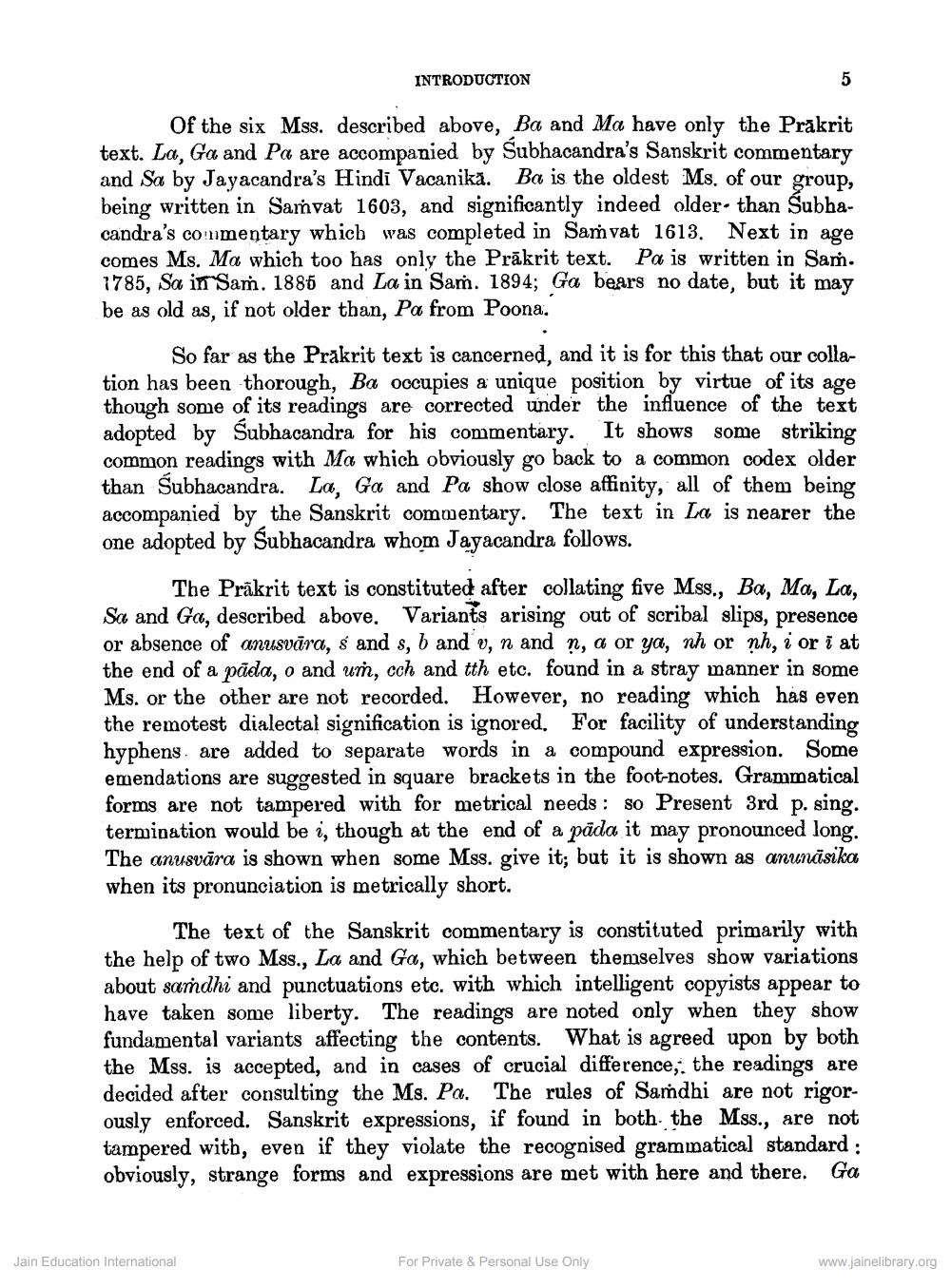________________
INTRODUCTION
Of the six Mss. described above, Ba and Ma have only the Prakrit text. La, Ga and Pa are accompanied by Subhacandra's Sanskrit commentary and Sa by Jayacandra's Hindi Vacanika. Ba is the oldest Ms. of our group, being written in Samvat 1603, and significantly indeed older than Subhacandra's commentary which was completed in Saṁvat 1613. Next in age comes Ms. Ma which too has only the Prākrit text. Pa is written in Saṁ. 1785, Sa i Sam. 1885 and La in Sam. 1894; Ga bears no date, but it may be as old as, if not older than, Pa from Poona.
So far as the Prakrit text is cancerned, and it is for this that our collation has been thorough, Ba occupies a unique position by virtue of its age though some of its readings are corrected under the influence of the text adopted by Subhacandra for his commentary. It shows some striking common readings with Ma which obviously go back to a common codex older than śubhacandra. La, Ga and Pa show close affinity, all of them being accompanied by the Sanskrit commentary. The text in La is nearer the one adopted by Subhacandra whom Jayacandra follows.
The Prākrit text is constituted after collating five Mss., Ba, Ma, La, Sa and Ga, described above. Variants arising out of scribal slips, presence or absence of anusvāra, s and s, b and v, n and n, a or ya, nh or nh, i or i at the end of a pāda, o and um, cch and tth etc. found in a stray manner in some Ms. or the other are not recorded. However, no reading which has even the remotest dialectal signification is ignored. For facility of understanding hyphens, are added to separate words in a compound expression. Some emendations are suggested in square brackets in the foot-notes. Grammatical forms are not tampered with for metrical needs : so Present 3rd p. sing. termination would be i, though at the end of a pāda it may pronounced long. The anusvāra is shown when some Mss. give it; but it is shown as anunāsika when its pronunciation is metrically short.
The text of the Sanskrit commentary is constituted primarily with the help of two Mss., La and Ga, which between themselves show variations about sardhi and punctuations etc. with which intelligent copyists appear to have taken some liberty. The readings are noted only when they show fundamental variants affecting the contents. What is agreed upon by both the Mss. is accepted, and in cases of crucial difference, the readings are decided after consulting the Ms. Pa. The rules of Sardhi are not rigorously enforced. Sanskrit expressions, if found in both the Mss., are not tampered with, even if they violate the recognised grammatical standard : obviously, strange forms and expressions are met with here and there. Ga
Jain Education International
For Private & Personal Use Only
www.jainelibrary.org




